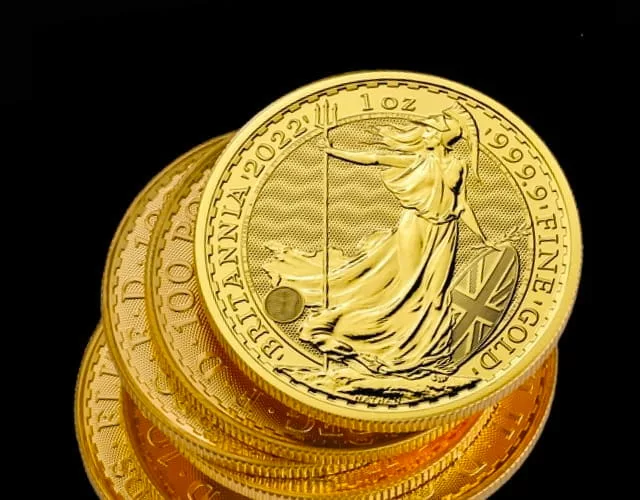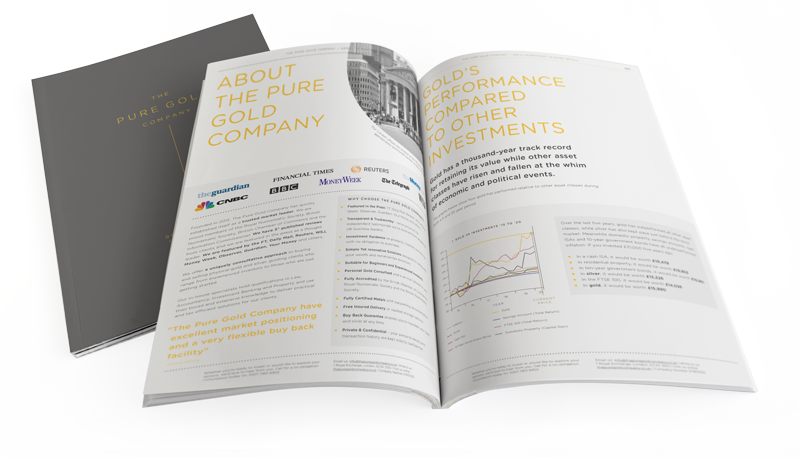Will this new development for investors strengthen digital investment or weaken physical assets?
HSBC this month launched a ‘tokenized’ form of gold bars, a digital twin of existing physical gold that is traded on a digital platform. While this is part of a wider trend towards trading digital assets, tokenizing physical gold can impact two important benefits of owning the physical asset – namely privacy and lower counterparty risk.
To maintain those key benefits investors should keep their physical gold in a safe, or if they need it stored then ensure it is allocated and segregated in a secure vault.
What is tokenization?
The HSBC product launched this month uses a process called tokenization. This is when an issuer (in this case HSBC) creates a digital representation of value for either digital or physical assets in the form of digital tokens.
The item of value could be physical (a painting, a building, a financial asset like stocks or bonds) or digital (a ‘non-fungible token’, or NFT, which represents ownership of digital art and collectables, or digital currencies). These tokens that represent the asset are recorded on a digital ledger or blockchain, which is the same technology that cryptocurrencies use to record transactions in Bitcoin or other digital currencies.
HSBC’s new product does this with gold held by its institutional investors. The idea is that HSBC creates a digital twin of its loco London gold, which is the gold held in its London vaults that underpins gold trading. Loco London gold comes in bars of 400 troy ounces or 12.4kg, each worth almost £700,000 (in November 2023).
Tokenizing this gold allows owners to trade it on HSBC’s digital platform, either as a whole bar or part of a bar. The tokens themselves are much smaller than the bar itself, representing only 0.001 troy ounces, so owners of the bars can sell it off fractionally, in smaller amounts than if they were looking to sell the whole physical asset.
How is tokenized gold different to other digital gold assets like exchange-traded funds?
Digital gold already exists, most commonly in the form of gold exchange-traded funds (ETFs).
The fund itself owns physical gold or derivatives tied to the gold price, so when you invest in a gold ETF, you’re buying shares in the fund. This gives you a proportionate ownership interest in the fund’s underlying assets. However, you don’t directly own the physical gold. ETFs are traded on traditional financial platforms like a stock exchange, so they’re highly liquid and can be bought or sold during market hours at market prices.
On the other hand, tokenization is the digitization of physical gold where each token typically represents ownership of a specific quantity of gold. The physical gold is often stored in a secure vault, and the tokens are issued on a blockchain. Token holders have a direct claim to the underlying physical gold. Trading typically occurs on blockchain-based platforms (in HSBC’s case on its digital platform), and liquidity depends on the level of adoption of the token and the platform it’s traded on.
Discover Gold’s Unique Tax Advantage
Most investments are subject to some form of taxation, but physical gold can be totally free of VAT and capital gains tax.

So, while both tokenized gold and ETFs are forms of digital gold, in the former you own the asset and trade it digitally via a blockchain platform, and in the latter you own a share of a fund that owns gold, not the gold itself.
How does tokenization affect the benefits of physical gold?
When physical gold ownership is recorded or traded on an immutable ledger or blockchain, the privacy of the asset may be compromised. In addition, tokenization increases counterparty risk.
Physical gold has the enviable characteristic of anonymity. If you take physical ownership of your gold, store it yourself and perhaps pass it on to your family members, it is a private asset. Even if you choose to have it stored in a vault, if it is segregated and allocated, the gold physically belongs to you, and you can take delivery of it whenever you like.
Tokenization takes a physical or digital item and creates a secure record of it so it can be traded or tracked easily. Tokenized gold is recorded on a digital ledger, which, while not necessarily part of a public database, still reduces the privacy benefits of owning the physical gold without tokenizing it.
In addition, counterparty risk (the risk that one party in a transaction will default on its obligations) increases with the tokenization of physical gold.
Owning physical gold is largely counterparty risk-free. There is a direct exchange of goods, and the item is yours. This low counterparty risk is a key benefit of investing in physical gold especially for those worried about bank collapses or other failures in the financial system. However, the process of tokenization requires a financial or other institution to facilitate the making of a digital token, provide the platform for trading, and ensure the process of trading is secure. Each of these stages introduces another layer of risk that was not there before.

Will tokenization affect your physical gold holdings?
Tokenization makes sense for institutional investors with large gold holdings who want the benefits of physical gold (a safe-haven asset that is often used as a hedge against market volatility) while also enjoying the benefits of easy tradability. It also works for HSBC because it already uses its digital platform to facilitate the trading of assets, and gold is just one more asset in this portfolio.
The product is not available to retail investors at this stage anyway, so even interested gold buyers wouldn’t be in a position to trade tokenized gold. But the winds of change are blowing in that direction, and as tokenization becomes more commonplace it is likely fractional ownership of physical gold could become an alternative option for all investors.
For some, the aim of tokenization is to provide the benefits of gold ownership without the complexity and limitations of buying the physical asset, such as storage and transaction costs. But for others, the process of tokenization limits the benefits of privacy and lower counterparty risk. If that is the case, then buying physical gold ‘the old fashioned way’, ie. taking a delivery or opting for segregated and allocated storage, is the best option.


